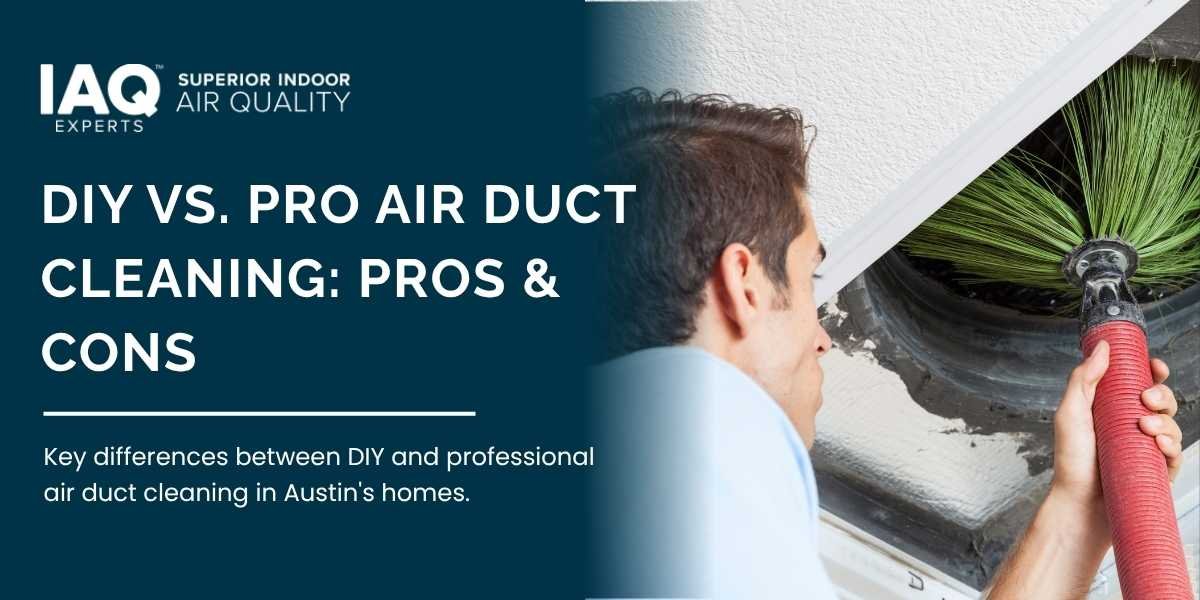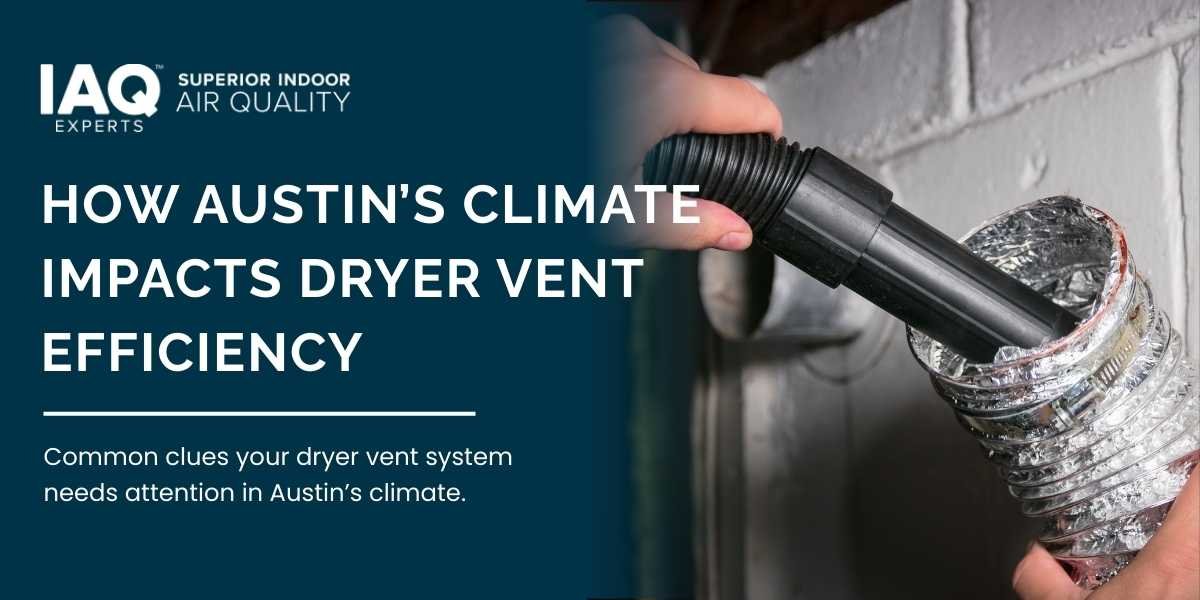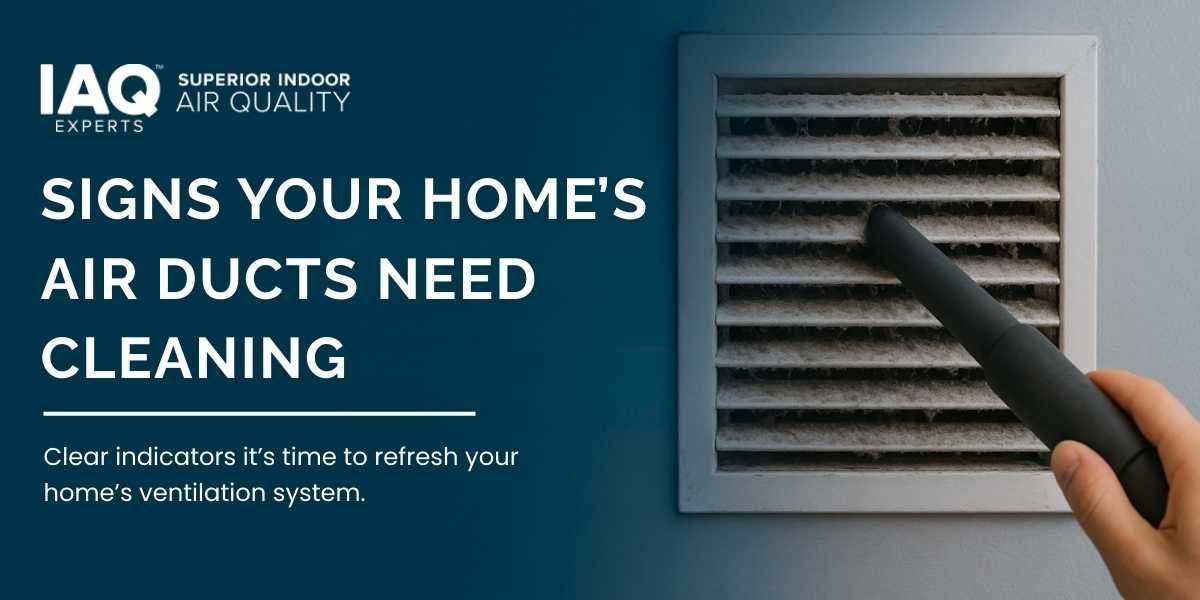Austin’s heat, cedar pollen, and constant construction dust all strain your HVAC system. Cleaning air ducts is more than just having clean vents. It can help with allergies, save energy and clean the air indoors. A simple filter change isn’t always enough—sometimes the whole ductwork needs attention.
This guide below shows when that deeper clean makes sense for Central Texas homes.
Start with the Industry Baseline
The National Air Duct Cleaners Association (NADCA) suggests a yearly check. Schedule a full clean every three to five years. The U.S. EPA gives one more rule: clean right away if you find mold, pests, or a thick layer of dust.
There’s no single “best-by” date stamped on your ductwork. The 3-to-5-year range is a starting gate; local conditions push you forward or hold you back.
Austin Factors That Can Shrink the Clock
- Cedar Fever and High Pollen Loads: Central Texas cedar and oak release clouds of pollen so dense they show up on weather radar. Daily counts are tracked because symptoms can be brutal. When that pollen drifts indoors, it clings to duct walls and recirculates until cleaned out.
- Humidity Swings: Summer humidity invites mold colonies to set up camp inside cool metal ducts. If your system sweats, spores hitch a ride and spread each time the blower starts.
- Dusty Growth Spurts: Austin’s skyline changes monthly. Nearby renovation or new construction pumps gypsum dust and fiberglass particles into the neighborhood – and straight into return vents.
- Pet-Friendly Culture: From St. Bernards to rescue cats, dander builds faster when furry roommates share your square footage.
Put these variables together and many homes need residential air duct cleaning Austin-style closer to every two, not five, years.
Red Flags Your Ducts Need Love Sooner
Wondering how often to clean air ducts if one or more of these pop up? The answer is “right after you notice them.”
- Visible Dust Plumes – Switch on the HVAC and see a mini-storm exit the registers? Time to schedule.
- Musty or “Dirty Sock” Odor – That damp basement smell is often mold on coils or inside duct liners.
- Unexplained Allergy Spikes – If antihistamines stop working indoors but cedar counts outside are low, buildup inside may be to blame.
- Uneven Airflow or Rooms That Never Cool – Some rooms stay warm because clogged ducts cut off airflow.
Residential vs. Commercial: Why the Schedules Split
Commercial air duct cleaning must also factor in building automation systems and larger sheet-metal trunks that trap debris in low-flow zones. Smart facility managers tie duct service to energy audits and filter-change logs rather than the calendar alone.
| Category | Homes | Businesses & Commercial Spaces |
|---|---|---|
| Occupancy pattern | Nights and weekends | All day (plus after-hours HVAC for servers, labs, etc.) |
| Pollutant sources | Pets, cooking oils, outdoor pollen | High foot traffic, copier/printing emissions, industrial dust |
| Regulatory triggers | Few, mostly voluntary | OSHA IAQ guidelines and, for some sectors, quarterly inspections |
| Recommended clean cycle | 2-5 years (Austin typically 2-3) | 1-3 years; medical and food facilities often yearly |
Building Your Personalized Cleaning Calendar
Here’s how to build your personalized cleaning calendar:
- Audit Your Lifestyle – Pets, hobbies (woodworking), and home-based businesses generate extra debris.
- Track Allergy Seasons – If cedar pollen forces you to close windows December-February, ducts absorb the payload.
- Check System Age – Older flex ducts with interior ridges collect dust more quickly than new smooth-walled metal.
- Add Big Events – Remodels, smoke damage, or a rodent episode reset the clock to zero.
- Document and Review – Keep a simple spreadsheet: service date, technician notes, next target date. When in doubt, err on the earlier side; clean ducts never hurt anybody.
Bottom Line and Next Steps
It is safe to say that clean ducts do not promise an everlasting respiratory bliss, but it is like playing with fire in a place with a reputation of cedar pollen and dust storms. The typical guidelines are every 3-5 years but with Austin being a hub of allergens, high humidity, and proliferation, the cycle can be reduced by half. Whether you’re scheduling residential air duct cleaning Austin style or planning a campus-wide commercial air duct cleaning, tune-ups follow symptoms, not the calendar.
Unsure when ducts were last cleaned or noticing a higher energy bill? Contact IAQ Austin – Air Duct Cleaning for a professional inspection. Experts will examine ducts, measure particulate levels, and create a custom cleaning schedule based on the home’s needs. Enjoy fresher air and energy savings with top-notch service!
Breathe easier, Austin. Get your ducts checked, stay ahead of cedar season, and keep that cool air flowing like Barton Springs on a summer afternoon.
Quick FAQ for Austin Homeowners
Q. Does cleaning really boost efficiency?
Yes. Field studies show that an efficiency of 21 percent can go down by simply dusting a cooling coil by 0.042 inches.
Q. Can I DIY duct cleaning?
Standard shop vacuums won’t reach far enough or seal sections to prevent blow-back. Professional negative-pressure equipment is the safer bet.
Q. What if I have metal supply ducts but flex return ducts?
Request a hybrid cleaning plan: mechanical agitation for metal trunks and gentle brush-and-vacuum for flexible runs to avoid tears.
Q. Is chemical biocide necessary?
Only when lab tests confirm mold. Most Austin jobs rely on high-pressure air whips and HEPA-filtered vacuums without chemical fogging.
Q. Will cleaning cure all indoor allergies?
Not alone. Pair it with MERV-rated filters and sealing air leaks for best indoor air quality Austin homes can achieve.




